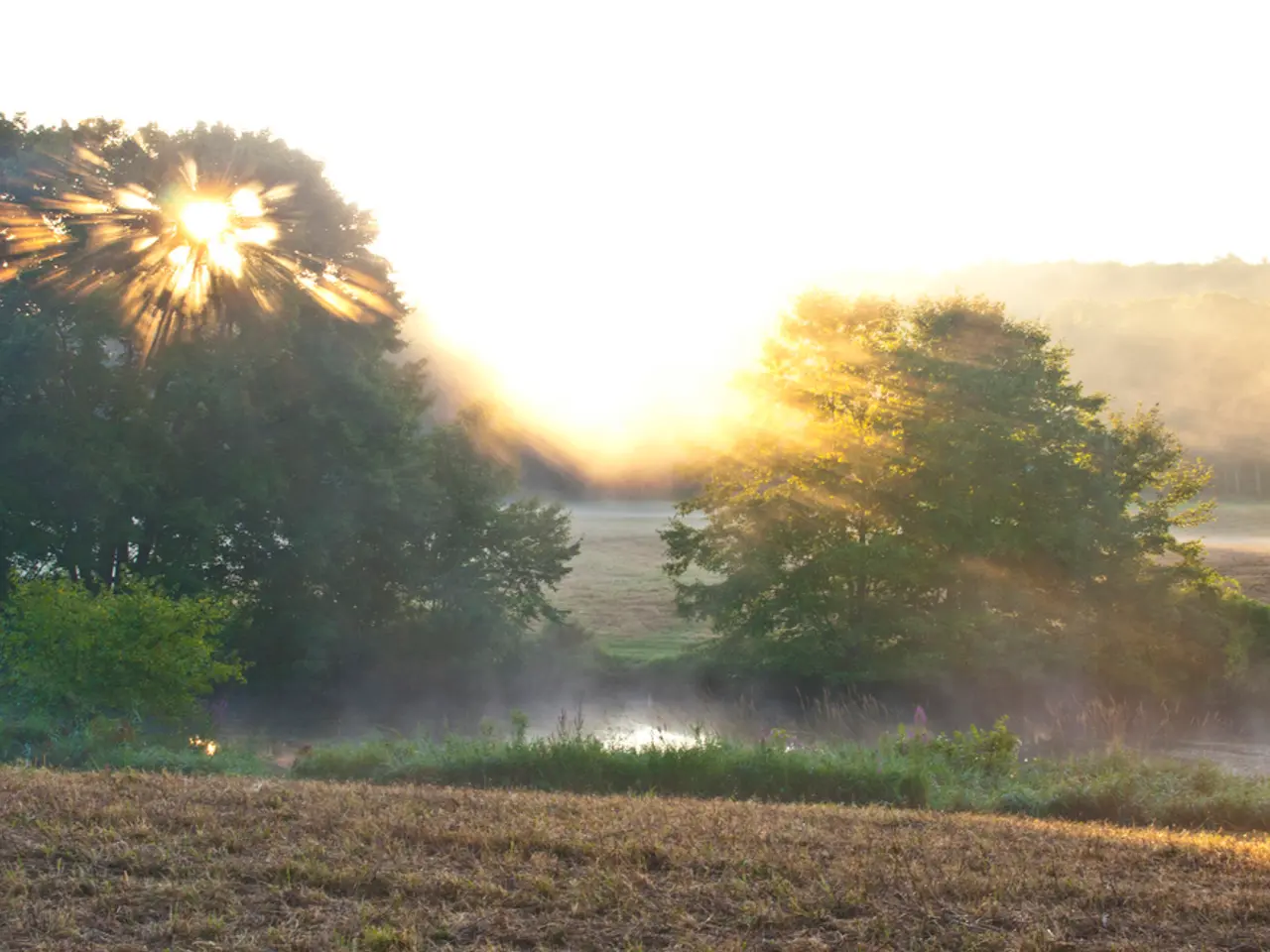Underground Greenhouses of Walipini Design: Effective in Britain Climate?
In the world of sustainable gardening, a unique concept known as Walipinis is gaining attention, particularly in regions with colder climates like the UK. This earth-sheltered cold frame, originating from the Aymaran language of Bolivia, has shown promise for extending the growing season and protecting plants from freezing temperatures.
Walipinis work by harnessing the physics of passive solar heating and earth insulation. Built below ground level, these structures take advantage of the earth's natural thermal mass, keeping temperatures warmer in winter and cooler in summer. The transparent roof is angled to maximize sun exposure, trapping solar energy to heat the interior. This design is crucial, especially in northern regions with lower winter solar angles and shorter daylight hours.
However, it's important to note that while there is evidence of Walipinis working effectively in colder US zones, direct evidence from long-term, region-specific studies in the UK is limited. Site selection is critical for success, with the Walipini needing to be sited to receive maximum winter sun and the roof tilt optimized for the sun's lowest angle in winter. Soil conditions must also support stable walls and good drainage to prevent flooding or waterlogging, a potential risk with underground structures in wet climates.
A typical Walipini is a hole in the ground approximately 2 meters deep with a transparent roof designed to maximize sunlight and retain heat. However, it's essential to understand that the pineapple pit, a concept used by Victorian gardeners, is different from a Walipini. The pineapple pit consisted of three trenches covered with glass, slightly below ground level, connected with two cavity walls. The central trough in a pineapple pit was where the pineapples were grown, at an artifically high temperature, due to the manure.
While Walipinis show potential, they may face challenges in northern climates due to low light levels and temperature issues. Plastic covers on Walipinis may break the wind but have limited insulation qualities. Additionally, hills can block sunlight, further reducing the amount of solar energy available for heating.
For those interested in learning more about Walipinis, resources such as gardening Facebook groups and a Substack newsletter are available. It's worth noting that while there is potential for Walipinis to work in the UK, more research is needed to confirm their effectiveness in our specific climate conditions.
In conclusion, Walipinis offer a promising solution for extending the growing season in colder UK climates. Their success depends on careful design, orientation, and drainage considerations, as well as site selection to maximize sunlight exposure. While there is limited evidence of their effectiveness in the UK, the physics of passive solar heating combined with earth insulation make them a viable option for colder regions.
In the realm of home-and-garden lifestyle, the Walipini, a unique cold frame design from Bolivia, is garnering attention, particularly in the UK due to its potential to extend the growing season and protect plants from freezing temperatures in colder climates. To optimize its efficiency, special care should be taken during site selection, ensuring the Walipini is situated to receive maximum winter sun and the roof tilt is optimized for the sun's lowest angle in winter to maintain an appropriate lifestyle for gardening in the UK.




